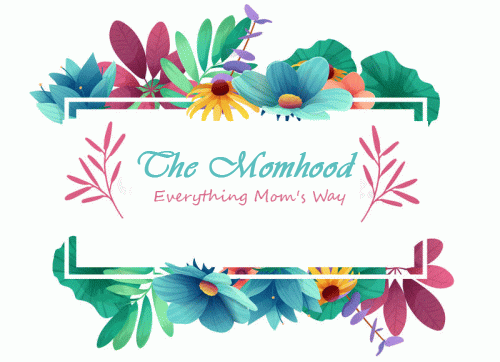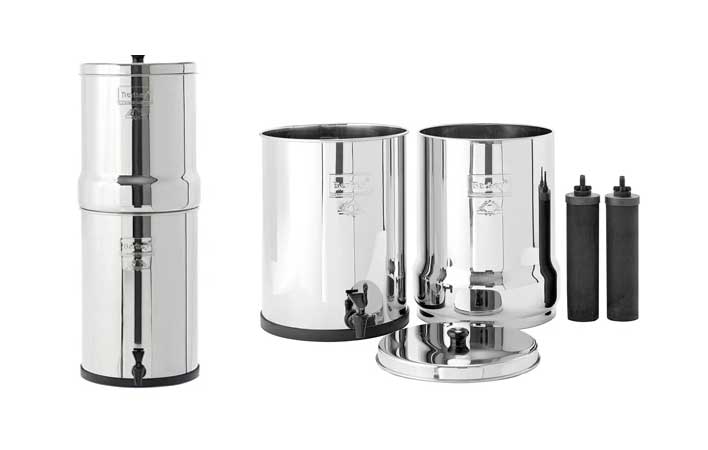Tap water is among the most regulated and tested source of water you can find in the United States. Still, tap water contains various harmful chemicals, heavy metals, carcinogens, and pathogens that you don’t want to ingest, bathe in, or cook with. Some of these are hazardous pollutants like fluoride, arsenic, and other petrochemicals, pharmaceuticals, and pesticides.
The good part is that there are various water filters like Berkey water filter that can remove these pollutants and provide you with safe and clean drinking water. You would say that the same can be achieved with bottled water as well. Why invest in a filter? This post will explain that question in detail and also explain the need to filter water.
Bottled Water is Not All That It Claims to Be
Many people are of the misconception that bottled water is way healthier than tap water. It is purified and mineralized after all. The hard truth is that bottled water manufacturers are not subject to stringent scrutiny and regulation. In fact, the federal government does not require bottled water to be any safer or more pure than regular tap water.
You would reconsider taking a swig of that bottled water when you realize that chemical pollution standards for tap water and bottled water are almost identical. In any case, most companies just pour filtered tap water and sell it as bottled water anyway.
The worst part is that bottled water companies, unlike most public water utilities are not required to release their testing data to the public. State of California is an exception where minimum information is mandated to be released. Basically, you are never sure what you are getting when you buy bottled water. However, if you had a water filter, like Berkey water filter, you could be sure that the water you are drinking is completely safe, clean, and pure.
Stats against Bottled Water
The Environmental Working Group (EWG) after conducting extensive research found 10 popular brands of bottled water to have 38 dangerous contaminants. The list includes industrial chemicals, arsenic, disinfection byproducts, fertilizer residue, and pain medication.
The research also reported assays from another study conducted at the University of Missouri that claimed bottled water from one particular brand to be the direct cause of a 78% increase in breast cancer as compared to the control group.
Natural Resources Defense Council has also conducted separate tests on bottled water and found similar contaminants. In fact, many major brands were compelled to recall their products because of presence of E. coli.
Bottled Water Takes a Heavy Toll on the Environment
You may already be considering switching to Berkey water filter from bottled water now that purity of bottled water is under scrutiny. However, there is another serious reason that should compel you to invest in a water filter rather than purchasing bottled water – environment.
The industry is not just selling water that is slightly cleaner than tap water at 1,900 times the cost, but is also ravaging the environment. Consider this:
- Almost 17 million barrels of oil is used every year to manufacture the plastic bottles used by soda and water industry. This is excluding transportation.
- Bottling water results in 2.5 million tons of additional carbon dioxide in the atmosphere each year.
- Peter Gleick of the Pacific Institute has stated that only about a third of plastic water bottles get recycled in the United States. This means about two-thirds end up in the garbage as litter or the ocean.
- Even the bottles that do get recycled are simply down-cycled, which means after about another incarnation, they will end up in landfills anyway.
- Plastic bottles are right there with plastic bags when it comes to garbage pollution on beaches and shores. A study claims that over 500 billion disposable cups and bottles end up polluting rivers, lakes, soil, and oceans wreaking havoc on marine and animal life.
- It takes about 3 liters of regular water as per the Pacific Institute to produce a liter of bottled water. That is a lot of water wasted. And, if you factor in the water required to manufacture transportation fuel and paper labels, it is actually closer to six liters of water to produce 1 bottle.
Given the droughts and fresh water shortages happening in the United States and worldwide, you would wonder why bottled water is still a thing. This is in addition to an increase in cases of asthma, cancer and other diseases because of the oil and chemicals used to make plastic soda and water bottles. This is why you should say no to bottled water for good and embrace the idea of having your own personalized water filter.
In fact, you don’t even need bottled water on the go. Berkey water filter has a to-go kit that can provide you with a quart of water wherever you are.
Your Tap Water Isn’t Safe Either
If you think you will just switch to tap water and cut your losses, you shouldn’t. Filtered water is a necessity, regardless of where you live. Bottled water is not as safe as they claim is a fact. But, tap water may contain certain levels of chemicals that are harmful to you. You do not want to drink this water, cook with it or even let your skin absorb it.
You need to understand that in the U.S. chemical pollution standards for water, whether bottled or tap, are pretty lax. They only cover those microorganisms and pollutants that can make you sick immediately. They don’t look at the bigger picture. For instance, municipal tap water contains high levels of chlorine to kill harmful bacteria.
In many cities, fluoride is added to water as well for various reasons. Over the past few years, many water districts have come up with a new formula to kill quickly evolving pathogens by mixing chlorine+ammonia (called chloramine) to water. This has dramatically changed the landscape of water purification because chloramines are almost impossible to remove and leach lead and copper from water pipes into the food.
Chlorine has been linked by the American Journal of Public Health to certain types of cancers, skin irritation, and asthma. They determined that over two-thirds of the harmful exposure was through inhalation of chlorine while in the shower and due to skin absorption.
EPA Standards Don’t Make Tap Water Safe
But, these are not the only things you need to be concerned about. The Environmental Working Group, after three years of research and analysis of 20 million drinking water tests, detected that there are over 316 contaminants present in the water that does not fall under the regulation purview. These include pharmaceutical residues and radioactive particles.
So, while your tap water may meet Environmental Protection Agency mandatory water quality standards, they may contain pollutants that are completely unregulated. Every tap water source the group checked came back positive for unwanted chemicals called trihalomethanes. These are also called Volatile Organic Chemicals (VOCs) and are formed when chlorine reacts with rotting organic matter, such as sewage, dead leaves, dead rats, or farm runoff.
Trihalomethanes are impossible to avoid in pipelines and tap water systems. The bad part is that they are linked to some pretty serious illnesses, including reproductive disorders and bladder cancer. Chloroform is a well-known member of this family and considered a carcinogen by the U.S. government.
So, What’s Really In Your Water?
You can always look at the EWG report to check whether they analyzed water samples from your area. EWG tested for multiple contaminants that municipal utilities don’t test or are not required to test for. This report can be an excellent way for you to find what is really in your water.
You can also know what is in your tap water by reading the annual water quality report published by your water utility company. This is something most homeowners overlook. This report goes by many names – Consumer Confidence Report, Drinking Water Quality, and Water Quality Report.
The law requires all utility providers to send a copy of this report to their customer by July 1. You can always request for another copy or find a digital copy on the company’s website. There may be several confusing terms on the water quality report. This should help:
- Parts per million (ppm) or parts per billion (ppb): This is the concentration of chemicals per part
- Maximum Contaminant Level (MCL): This is the maximum standard set by EPA regulations and federal law. Reading should never be higher than these levels.
- Maximum Contaminant Level Goal (MCLG): This refers to a voluntary level set by public health experts for minimizing risks. EPA legal limits are usually higher than this since it takes into account feasibility and cost incurred by utility companies.
- Action Level (AL): Water supplier is required to take certain measures when concentration of chemicals is higher than this level
You should consider investing in water filters, such as Berkey water filter if the measurements for arsenic, chromium-6, lead and trihalomethanes is higher than the regulatory cap or right at the threshold.


